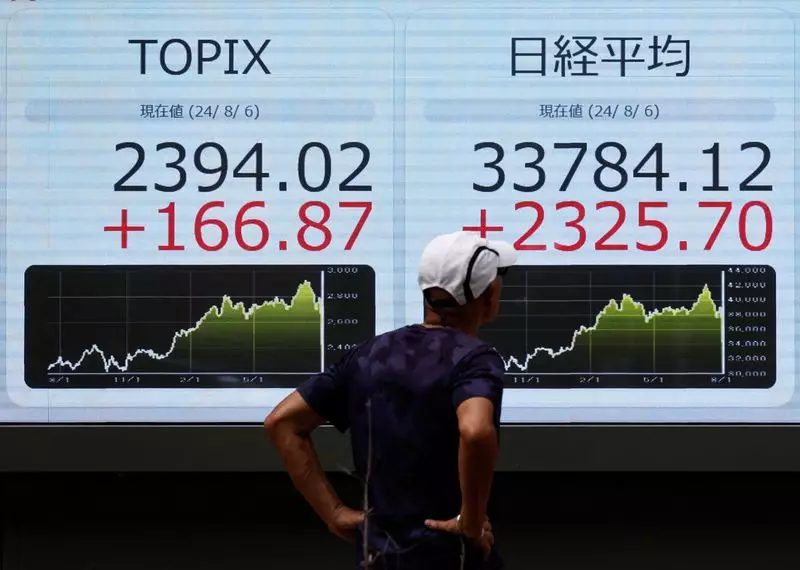Asian markets experienced a notable uptick recently, hitting highs not seen in a couple of months. This surge can primarily be attributed to prevailing optimism surrounding potential rate cuts from the U.S. Federal Reserve, coupled with anticipation of a significant policy decision from the Reserve Bank of Australia (RBA). Investors are keenly observing these developments, which are anticipated to influence not only local markets but also international trade dynamics.
In a bid to bolster its struggling economy, China’s financial regulators, including the central bank, have introduced a series of measures aimed at revitalizing growth. Notable among these initiatives is the decision to lower mortgage rates for existing homeowners, a strategic move intended to stimulate consumer spending and restore confidence in the real estate market. This announcement has had an immediate impact, encouraging bullish market sentiment across the region, as it signals the government’s commitment to addressing economic stagnation.
This proactive stance by Chinese authorities is essential, especially considering the nation’s previous underperformance in various economic indicators. Investors optimistic about economic recovery in China are likely to view these actions as positive signals, potentially leading to increased investment inflows into Asian markets.
As the RBA’s next meeting approaches, an air of cautious optimism pervades the market. Analysts widely predict that the RBA will maintain its current interest rate despite recent cuts from the U.S. Fed. Charu Chanana, a prominent strategist in the currency sector, suggests that while the RBA aims to keep inflation expectations anchored, a significant policy change could hinge on upcoming labor market statistics and the third-quarter Consumer Price Index (CPI) report.
While the RBA maintains a hawkish stance for now, the possibility of a shift in policy come November 5 remains a topic of speculation. Investors are poised for how the narrative may evolve based on the unfolding economic data from Australia and abroad.
Last week, the Federal Reserve’s decision to cut interest rates by 50 basis points stirred considerable conversation among market analysts and traders alike. This aggressive move was framed as a necessary strategy to facilitate a ‘soft landing’ for the economy, according to Chicago Fed President Austan Goolsbee. He emphasized the need to strike a balance between stimulating growth while managing inflation, indicating that the Fed is closely monitoring economic indicators to inform future rate adjustments.
Market perceptions of the Fed’s stance reflect a divided sentiment, with observers split on whether another 50 basis points or a smaller 25 basis points cut would be on the table in November. The CME Fedwatch tool highlights this ongoing uncertainty, with traders pricing in approximately 76 basis points of easing by year-end—a potentially significant factor influencing the global economic landscape.
On the currency front, the U.S. dollar index has shown signs of weakness, hovering around 100.95, close to a one-year low. This shift is partly attributed to the dovish sentiment following the Fed’s recent cut. The yen, meanwhile, has remained relatively stable against the dollar, while the euro experienced a mild drop after disappointing business activity reports in the Eurozone raised concerns about further rate cuts by the European Central Bank.
In commodities, the oil market showed slight positive movements in early trading, influenced by mixed sentiment around demand. Brent crude futures edged up, reflecting underlying supply concerns, while U.S. crude mirrored these movements. Observers will be keen to analyze how macroeconomic factors—including global economic health and geopolitical developments—will continue to shape energy prices.
The prevailing factors influencing Asian stocks and market sentiment are a confluence of domestic policy actions, particularly from China and Australia, coupled with global monetary policy developments from the U.S. Federal Reserve. While the optimism stemming from potential U.S. rate cuts provides a favorable backdrop, the overarching question remains: will these measures translate into sustained economic recovery and risk resilience in the markets? Investors are likely to remain vigilant, adjusting their strategies to navigate the evolving financial landscape in the coming months.

